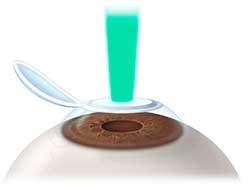Posted by: Philadelphia Eye Associates in Eye Health, LASIK Surgery on March 22, 2019
Vision is our most precious sense and we all want to do everything possible to preserve it. Before considering any elective surgery on our eyes it is important to know the facts about the safety and success rates for those surgeries. So how safe is LASIK vision correction?
The short answer is that LASIK is very safe and continually getting even safer.
But let’s dig deeper…

LASIK, or laser-assisted in situ keratomileusis, the most common vision correction surgery, is performed around 700,000 times per year in the United States. LASIK was first FDA approved in the US in 1998. Curiously, before the long term safety of the technique was well-established, the surgery was extremely popular, peaking at nearly 1.5 million surgeries per year in 2000.
Since 2000, there have been countless advances in the technology used for LASIK and a massive amount of research performed on the outcomes, safety, and long term effects of laser eye surgery. We now know that some patients who had LASIK in those early days were not actually good candidates for the surgery, and therefore our current selection criteria for who qualifies for LASIK is much narrower. However, we can better treat higher amounts of astigmatism as compared to 20 year ago.
Among the advances in LASIK technology have been the introduction of:
LASIK in 2019 is much better and safer than LASIK in 2000. We have more predictable outcomes, fewer complications, lower rates of re-treatment, and much lower rates of night vision problems. But how safe and effective is LASIK these days? Let’s look at the data.
The most recent FDA review of LASIK outcomes, PROWL-1 and PROWL-21-2 found that there was a very high rate of 20/20 or better vision after LASIK. Patient satisfaction was also very high and dissatisfaction was extremely low. Dry eye, known to be a side effect (although often temporary) was found in a subset of patients after the initial healing period.
In short, LASIK is highly effective and patients are far and away very satisfied with their procedures. However, LASIK is a surgical procedure with risks that need to be weighed against the expected benefits of the procedure. Each potential patient needs to have an honest discussion with their ophthalmologist and needs to spend time reviewing any preoperative literature before making this important decision.

Dr. Brad H. Feldman is a board-certified, fellowship-trained ophthalmologist specializing in cornea transplantation, cataract surgery, and laser vision correction such as LASIK and PRK. Learn more about Dr. Feldman.
8025 Roosevelt Blvd.
Philadelphia, PA 19152